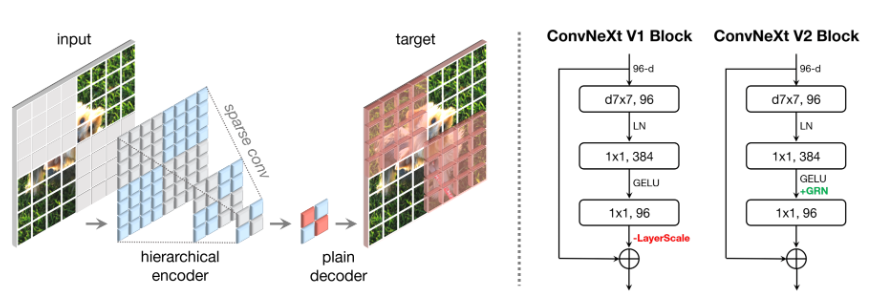ConvNeXt_V2¶
ConvNet Image Classification
- class lucid.models.ConvNeXt_V2(num_classes: int = 1000, depths: list[int] = [3, 3, 9, 3], dims: list[int] = [96, 192, 384, 768], drop_path: float = 0.0)¶
The ConvNeXt_V2 module in lucid.nn builds upon the original ConvNeXt architecture, offering enhanced flexibility and efficiency. It introduces updated configurations for modern image classification tasks, while maintaining the hierarchical design of its predecessor.

Class Signature¶
class ConvNeXt_V2(ConvNeXt):
def __init__(
num_classes: int = 1000,
depths: list[int] = [3, 3, 9, 3],
dims: list[int] = [96, 192, 384, 768],
drop_path: float = 0.0,
)
Parameters¶
num_classes (int, optional): The number of output classes for classification. Default is 1000.
depths (list[int], optional): The number of layers in each stage of the network. Default is [3, 3, 9, 3].
dims (list[int], optional): The number of channels in each stage of the network. Default is [96, 192, 384, 768].
drop_path (float, optional): The stochastic depth drop path rate. Default is 0.0.
Examples¶
Basic Example
import lucid.models as models
# Create ConvNeXt_V2 with default 1000 classes
model = models.ConvNeXt_V2(num_classes=1000)
# Input tensor with shape (1, 3, 224, 224)
input_ = lucid.random.randn(1, 3, 224, 224)
# Perform forward pass
output = model(input_)
print(output.shape) # Shape: (1, 1000)